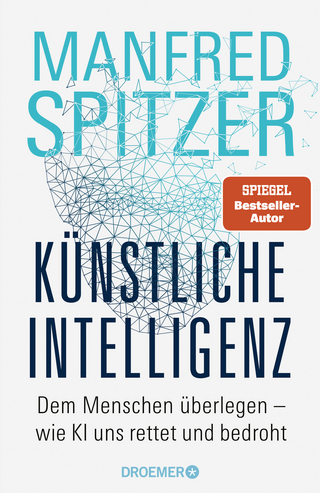
3D Deep Learning with Python
Packt Publishing Limited (Verlag)
978-1-80324-782-3 (ISBN)
Visualize and build deep learning models with 3D data using PyTorch3D and other Python frameworks to conquer real-world application challenges with ease
Key Features
Understand 3D data processing with rendering, PyTorch optimization, and heterogeneous batching
Implement differentiable rendering concepts with practical examples
Discover how you can ease your work with the latest 3D deep learning techniques using PyTorch3D
Book DescriptionWith this hands-on guide to 3D deep learning, developers working with 3D computer vision will be able to put their knowledge to work and get up and running in no time.
Complete with step-by-step explanations of essential concepts and practical examples, this book lets you explore and gain a thorough understanding of state-of-the-art 3D deep learning. You’ll see how to use PyTorch3D for basic 3D mesh and point cloud data processing, including loading and saving ply and obj files, projecting 3D points into camera coordination using perspective camera models or orthographic camera models, rendering point clouds and meshes to images, and much more. As you implement some of the latest 3D deep learning algorithms, such as differential rendering, Nerf, synsin, and mesh RCNN, you’ll realize how coding for these deep learning models becomes easier using the PyTorch3D library.
By the end of this deep learning book, you’ll be ready to implement your own 3D deep learning models confidently.
What you will learn
Develop 3D computer vision models for interacting with the environment
Get to grips with 3D data handling with point clouds, meshes, ply, and obj file format
Work with 3D geometry, camera models, and coordination and convert between them
Understand concepts of rendering, shading, and more with ease
Implement differential rendering for many 3D deep learning models
Advanced state-of-the-art 3D deep learning models like Nerf, synsin, mesh RCNN
Who this book is forThis book is for beginner to intermediate-level machine learning practitioners, data scientists, ML engineers, and DL engineers who are looking to become well-versed with computer vision techniques using 3D data.
Xudong Ma is a Staff Machine Learning engineer with Grabango Inc. at Berkeley California. He was a Senior Machine Learning Engineer at Facebook(Meta) Oculus and worked closely with the 3D PyTorch Team on 3D facial tracking projects. He has many years of experience working on computer vision, machine learning and deep learning. He holds a Ph.D. in Electrical and Computer Engineering. Vishakh Hegde is a Machine Learning and Computer Vision researcher. He has over 7 years of experience in this field during which he has authored multiple well cited research papers and published patents. He holds a masters from Stanford University specializing in applied mathematics and machine learning, and a BS and MS in Physics from IIT Madras. He previously worked at Schlumberger and Matroid. He is a Senior Applied Scientist at Ambient.ai, where he helped build their weapon detection system which is deployed at several Global Fortune 500 companies. He is now leveraging his expertise and passion to solve business challenges to build a technology startup in Silicon Valley. You can learn more about him on his personal website. Lilit Yolyan is a machine learning researcher working on her Ph.D. at YSU. Her research focuses on building computer vision solutions for smart cities using remote sensing data. She has 5 years of experience in the field of computer vision and has worked on a complex driver safety solution to be deployed by many well-known car manufacturing companies.
Table of Contents
3D data file formats - ply and obj, 3D coordination systems, camera models
Basic rendering concepts, basic PyTorch optimization, heterogeneous batching
Fitting using deformable mesh models
Differentiable rendering basic concepts
Differentiable volume rendering
NeRF - Neural Radiance Fields
GIRAFFE
Human body 3D fitting using SMPL models
Synsin - end-to-end view synthesis from a single image
Mesh RCNN
| Erscheinungsdatum | 03.11.2022 |
|---|---|
| Verlagsort | Birmingham |
| Sprache | englisch |
| Maße | 75 x 93 mm |
| Themenwelt | Informatik ► Theorie / Studium ► Künstliche Intelligenz / Robotik |
| ISBN-10 | 1-80324-782-7 / 1803247827 |
| ISBN-13 | 978-1-80324-782-3 / 9781803247823 |
| Zustand | Neuware |
| Haben Sie eine Frage zum Produkt? |
aus dem Bereich


